Author: PPG Assistance Animal Division
Do’s and Don’ts: A Guide for Assistance Dog Trainers
by the Pet Professional Guild Assistance Animal Division Do Not Touch Someone’s Assistance/Service Dog Without Prior Consent You could distract the dog performing an alert or monitoring task. The dog could also become distracted and miss cues from the handler. You wouldn’t handle someone’s medical equipment, so please respect that an assistance dog is also a medical aid. Do Not Offer to Handle the Dog During Times of Training We need the handler to be confident and skilled in their handling. To work in tandem for the individual’s health is… Continued
Need Before Breed: Assistance Animals Are Not Limited to the “Fab Four”
Not everyone wants or can handle one of the “Fab Four” (Lab, golden retriever, standard poodle, or German shepherd dog). Some people may need a smaller or larger dog. Some may have fears of specific breeds. The “Fab Four” in the Assistance Animal Community The Labrador retriever and the golden retriever are two of the most commonly seen breeds trained to be assistance animals. Generally speaking, it is because these two breeds have temperament traits that best fit with the requirements necessary for a working dog who will encounter a… Continued
Variations Within Disabilities
Never be afraid to ask a client how you can best support them! by the Pet Professional Guild Assistance Animal Division When working with someone who has a disability, it’s important to acknowledge their limits within that disability. Those limits will vastly vary, even with individuals with the same diagnosis, so it’s imperative to have a conversation with that person to understand exactly what their limits may be. But what about when those limits seem to change? What if they were able to do something two days ago during your… Continued
When Services Refuse Access to Assistance Dog Teams
Pet Professional Guild Member Let Down by Services That Promise Otherwise Uber is a taxi service which is accessible through an app. Within the app you can book your driver and also let them know if you have an assistance dog. The idea is to help people to easily access the most local driver and have reassurance that they can go to their destination, with their assistance dogs, in peace. However, some Uber drivers over the last five years have been refusing access to Ruby Welsford and Millie Gee (and… Continued
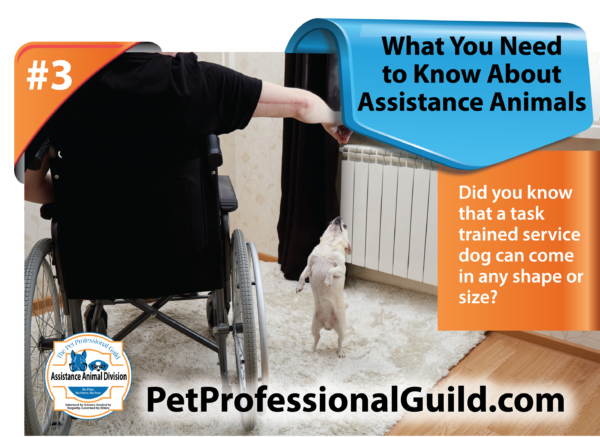
Ways Assistance Animals Help
Assistance Animals are so much more than well- behaved and well-trained pets. They work in a vital, supportive role to their guardians. What Do Assistance Animals Do? Assistance animals help to keep their handlers safe in many scenarios. For example, they can medically alert to low blood sugar, migraines, or an epileptic fit before they manifest, or detect their guardians’ changing blood levels or breathing. They can also help as psychiatric service dogs. They may aid their guardian with PTSD through flashbacks and panic attacks, or help to ground a… Continued
When is it Okay to Touch an Assistance Animal?
Seeing more service animals in public can be exciting for any animal lover, but it raises an important question: when is it okay to touch an assistance animal? Service Animal Tasks Assistance animals are most often dogs, and they have been trained to perform medically-necessary tasks for their handlers. Some examples of this could be a guide dog performing alert behaviors for a visually-impaired handler, or a psychiatric service dog grounding their person during a panic attack. Unlike therapy and comfort dogs, service animals are trained especially for… Continued
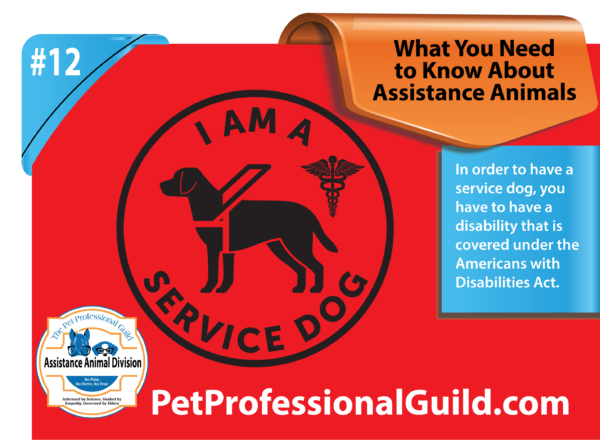
How To Select a Service Dog or Assistance Dog Prospect
It can be a daunting prospect to begin to research and search for a service dog or assistance dog in the best of cases. When you are going to be training the dog yourself, due to barriers accessing charitable services, it can be even harder. A Force-Free Professional Can Make a World of Difference Seeking help from a qualified Pet Professional Guild trainer can be extremely helpful. You are guaranteed to be working with a vetted and approved trainer. You can ask for their experience and knowledge with service/… Continued
How to Handle Your Dog When You Encounter a Service Dog
Many pet guardians don’t know what to do when they encounter a service dog team, particularly when they have their pet with them. Here are a few tips in case you and your pet encounter a service dog team at the pet store, park, or other place. Your first concern should be making sure your dog is leashed. No matter how well-trained you feel your dog is, if your dog makes a mistake and distracts the service dog, it could result in injury to the service dog handler. If… Continued
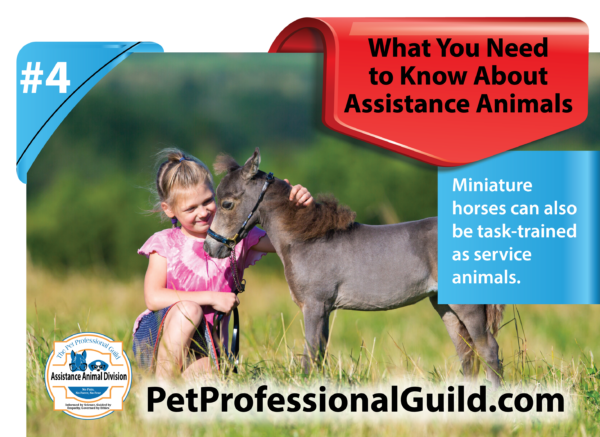
Loving Partners: The Bonds We Share with Assistance Animals
Anyone who has the luck to have a dog as a part of their lives knows just how much love and joy both guardian and dog share with one another. For Assistance Animal guardians, this relationship is even more deeply amplified. A Unique Bond This is not to disregard the love that all guardians share with their dogs, but to explain the unique bond assistance animal guardians have with their animals. For guardians of assistance animals, the guardian, and the animal– regardless of species– spend all of their time together,… Continued

Therapy Work for Pet Dogs
Many people feel that their dogs are missing out on something as a pet, or feel that others could also enjoy their dogs. Therapy work is a great way to give your dog a job that can improve life for both you and your dog, and also people in your community. Opportunities For dogs with very calm temperaments and basic training, there are many opportunities for you both to pay visits to specific places such as schools, hospitals, retirement homes, and other workplaces to offer help to others. Therapy… Continued
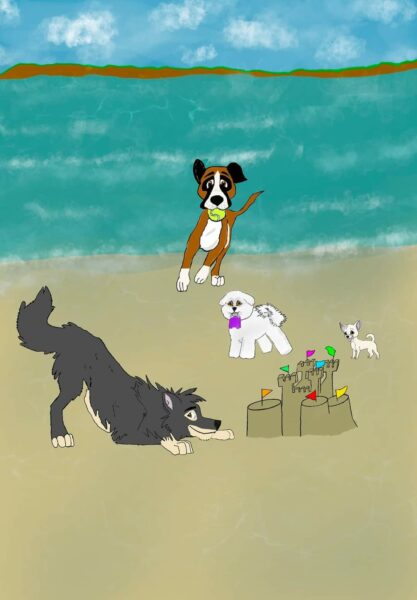
Assistance Animals: It’s NOT All Work and No Play!
Every dog wants to have fun, at least some of the time, and that goes for assistance animals such as service dogs, emotional support dogs, and therapy dogs. While some assistance dogs need to be on the ready 24/7 to aid their handlers when a need arises, that doesn’t mean they never get a break. Handlers of working assistance animals love their dogs and are grateful for the support they provide. They see their dogs as friends and trusted family members, and they want to enrich their lives as much… Continued
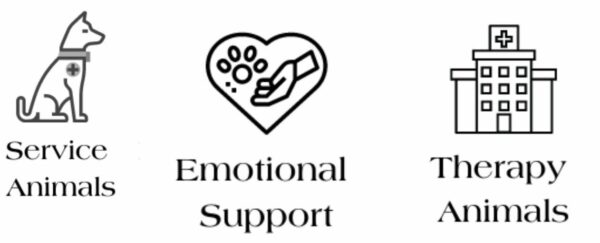
What Are Assistance Animals?
There are three categories for animals that assist humans in the U.S. This post explains the different categories and the roles such animals play for their owners and in society. SERVICE DOGS Specially trained dogs (and sometimes miniature horses) do many different kinds of work or tasks for their handlers with disabilities to help them lead more independent and normal lives. The most common services provided are mobility, medical alert, guiding the visually impaired, hearing alert, and psychiatric support. Service animals are covered under the Americans with Disabilities Act… Continued
